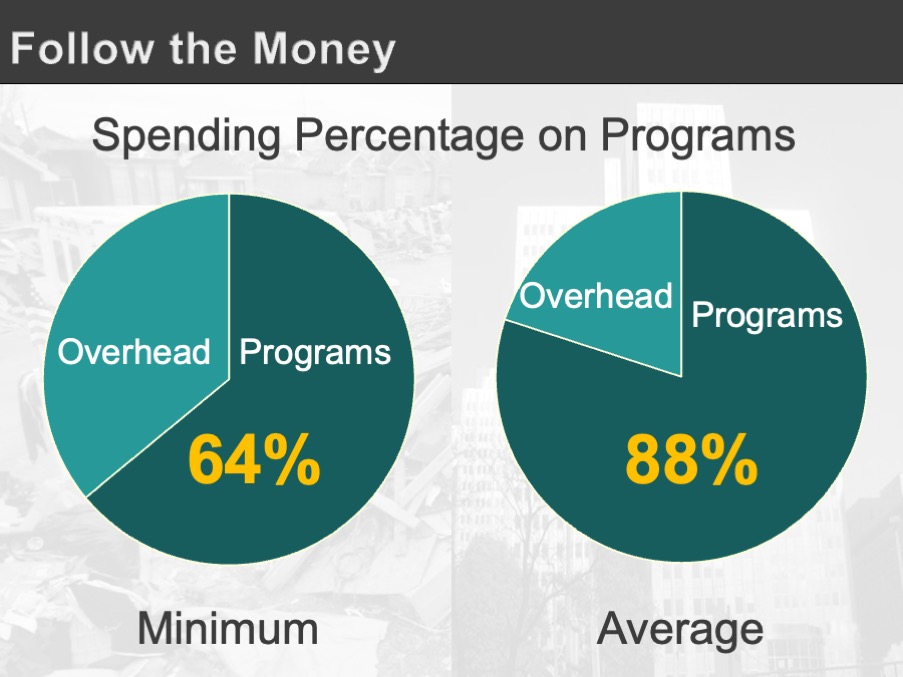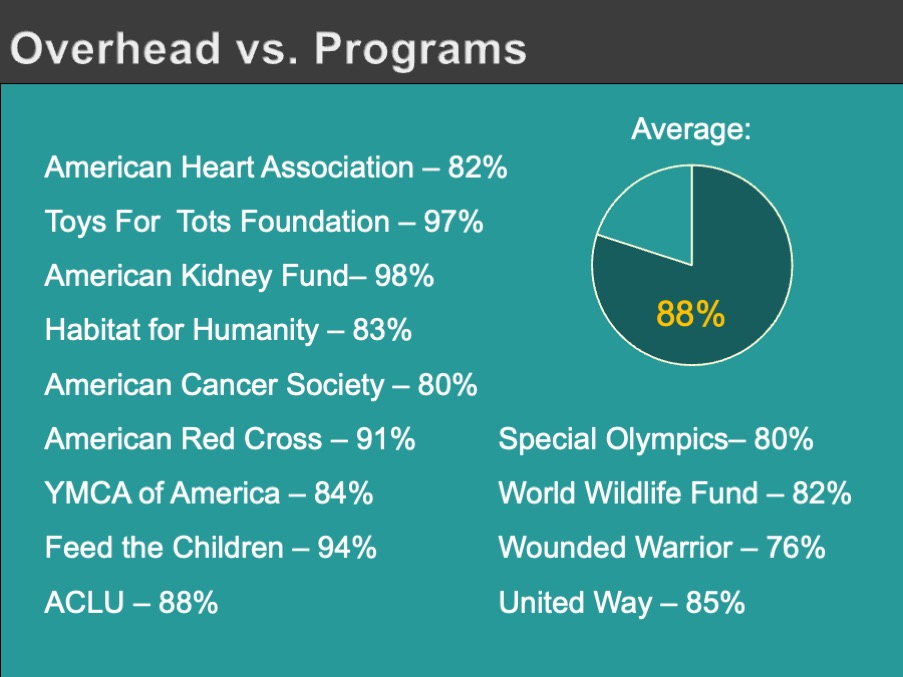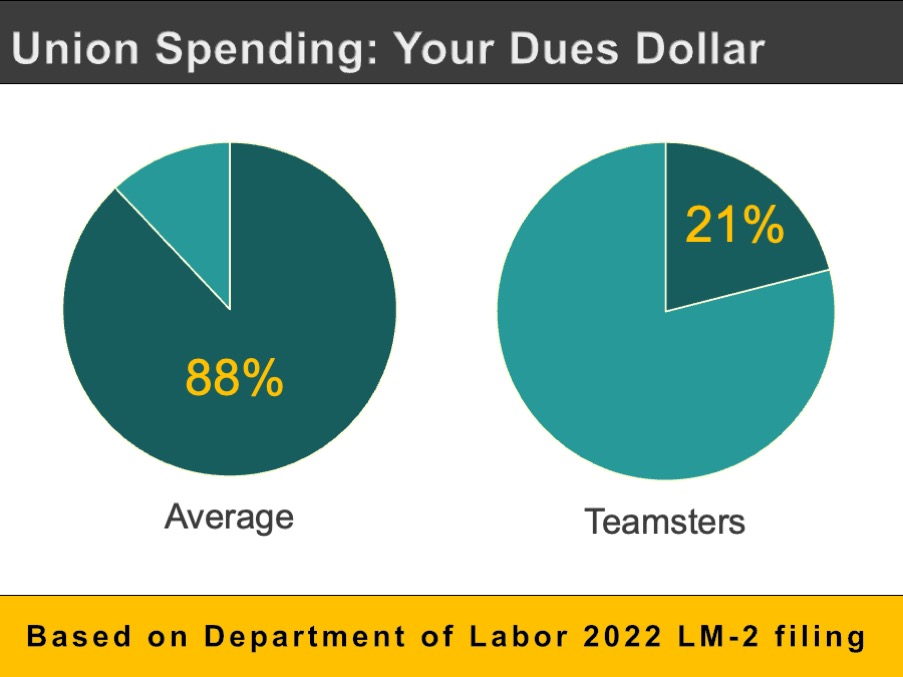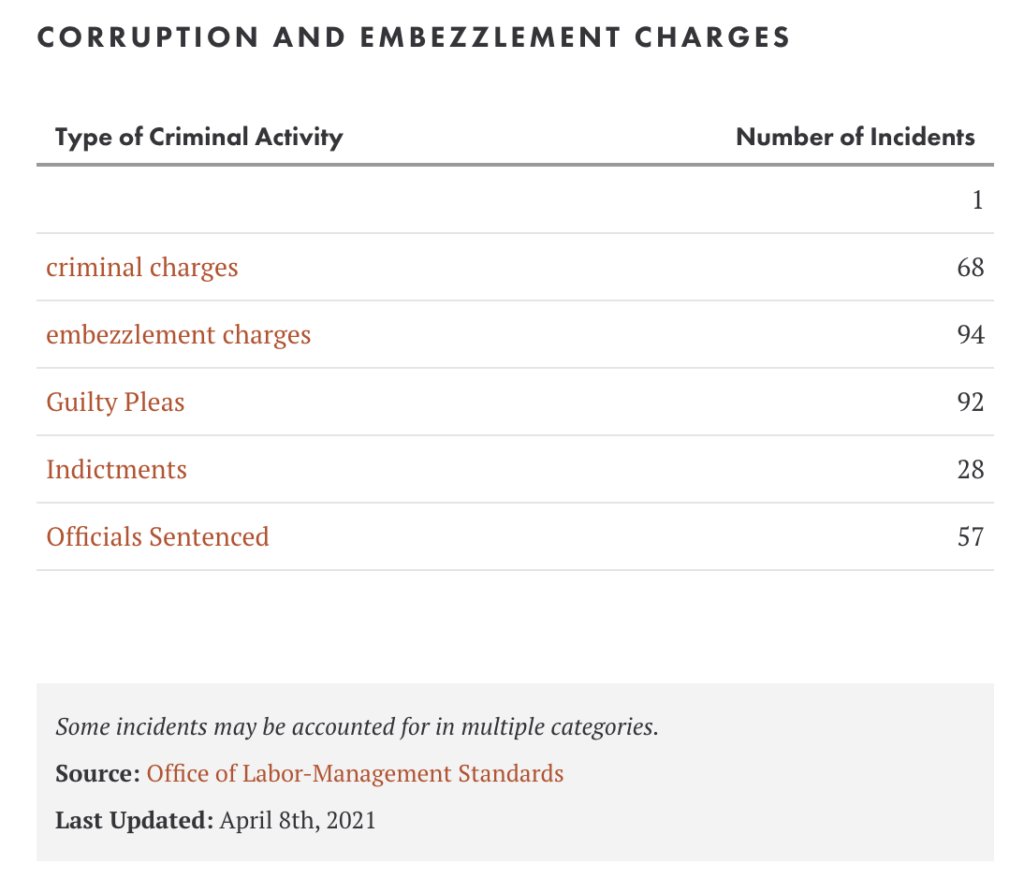Teamsters In The News

Unions like to present themselves as similar to a nonprofit organization, working for the benefit of those they supposedly represent. One of the best ways to evaluate the trustworthiness of a nonprofit is to look at the percentage of total spending that goes directly into their stated programs, versus what they spend on running the organization.
Charity watchdogs like the Better Business Bureau Wise Giving Alliance and the Charity Review Council say this percentage should be no lower than 64%.

The average spending on programs of the top 100 charities in the country, according to the Forbes Top Charities list for 2022, was 88% – far above the minimum.
The image above is a list of how some well-known nonprofits stack up to this measure.

Did the IBT even come close?
Hardly! According to their own financial statement, the IBT posted total income of almost $225 Million in 2022, yet spent only 21% on Representational Activities, including strike payments. The rest was spent on salaries, benefits and perks, office space and equipment, politics, taxes, and other overhead expenses. Almost the exact opposite of organizations whose stated purpose is to help people.
168% Increase in the amount of dues and fees collected per member.
In 2000 the Teamsters collected $79,526,628 in dues and fees from 1,402,000 members.
In 2022 they collected $192,885,463 from 1,253,634 members
That’s $113,358,835 more dollars from 148,366 fewer members.
The amount of money they have to take from your paycheck has steadily risen. Where will it go next?
An old adage reminds us to “choose our friends wisely.”
The table at the right provides some indication of the “company you keep” with the IBT. Another indication is how many Unfair Labor Practice charges have been filed against them. Although the IBT has gotten better since the mid-90’s when they averaged about 1078 ULP’s per year, in the last 10 years they’ve still averaged 1010 ULP’s each year.
They have also averaged about 21 strikes per year over the last five years. Over the last 10 years, the average strike lasted over 5 and a half months. That’s quite a while to be without a paycheck. During that same 10 years, 28 strikes lasted over 100 days, and 9 strikes lasted over 300 days.
Click on each link to read the story.
Right To Work laws provide an employee the right to choose not to pay dues to a union. The Teamsters would like to deny you this right. This image is taken directly from the Teamsters website:

